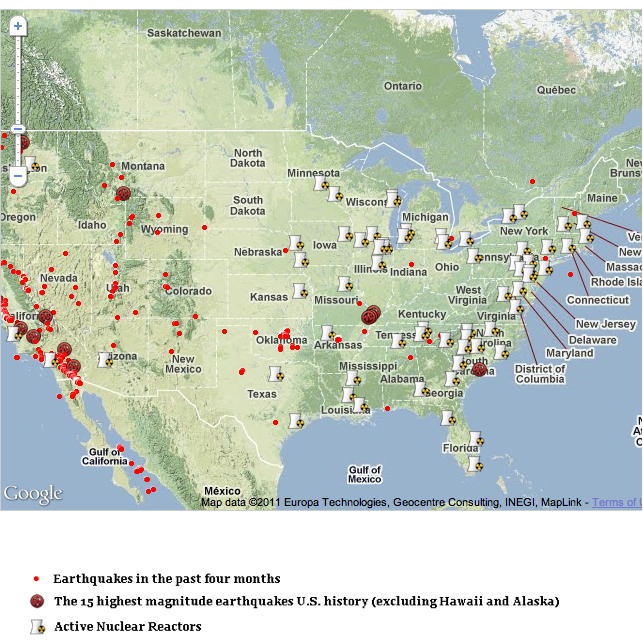For the second time in eight months, a coalition led by California Rep. Devin Nunes has proposed their Roadmap for America’s Energy Future (H.R. 909). The plan, introduced in the House last week, is advertised as a set of “comprehensive and forward thinking initiatives designed to address both the short and long-term energy needs of the United States.” Nunes and company deserve some credit for trying to straddle the market-and-drilling approach on the right with the green-deployment-now approach on the left; but, calling it a comprehensive energy policy solution? Far from it: the plan would do little more than drive fossil fuel development with some marginal progress on nuclear and renewables, while generally ignoring the need to drive innovation in the energy sector.
First, the key components: the bill would open up the Arctic National Wildlife Refuge and the outer continental shelf (OCS) to drilling for oil & gas, codifying the aggressive five-year leasing program (PDF) proposed, quite literally, during the Bush Administration’s waning hours. It would also restore Bush Administration plans to open roughly 2 million acres of western lands in Colorado, Utah, and Wyoming to oil shale development, which were suspended by the Obama Administration, much like the OCS drilling program. The bill would then deposit the federal revenues gained from leasing royalties — generally 12.5 percent or 16.7 percent of the value of the lease, depending on location and water depth — in a new “American-Made Energy Trust Fund” establish within the Treasury Department. These funds would, in turn, be used to carry out a series of reverse auctions for renewable energy: contracts would be awarded to those generators who could produce megawatts at the lowest cost, multiple times a year and in different regions.
On nuclear, the bill takes several steps. The Nuclear Regulatory Commission (NRC) would be required to issue 200 new permits by 2040, and to finish consideration of Yucca Mountain or find an alternative site within a year. The bill attempts to streamline the licensing process, establishes a national nuclear council, and opens the door to increased funding for small modular reactors (SMRs) and spent fuel recycling, among other things. Lastly, the bill would direct the Defense Department to move forward on coal-to-liquid fuel technology.
The real goal of any “comprehensive” energy policy must be to efficiently drive the clean energy transformation, simply put. This is best achieved through aggressive investment and support for energy innovation from lab to market, with the end goal of delivering affordable technology. The Roadmap’s sponsors take a worthwhile stab at this goal through the renewable energy reverse-auction idea. It’s an appealing premise: whereas production tax credits from clean power offer a flat subsidy per unit of energy produced, a reverse auction — with DOE as the demanding buyer and renewable generators as the striving sellers — can award contracts to those power producers who are able to achieve the best performance, each year. That means a built-in competition mechanism, forcing companies to compete against one another. And it sets limits on awards per source and per size, which means contracts wouldn’t be the exclusive domain of any one (or two) cheap technologies or biased in favor of large producers, ensuring an open field. As an incentive to help drive continual technical improvements in existing technology, it seems solid.
Beyond the auction, the plan also takes some decent first steps on innovation in the nuclear space, specifically on SMRs. The NRC does need to increase its manpower and resources devoted to assessing SMRs, a promising next step in nuclear technology, and while the bill guarantees nothing in terms of funding, it nevertheless acknowledges the problem. And some future reactor designs will run on spent fuel, so requiring NRC to pursue rulemaking on spent fuel recycling in the next two years is a good step forward.
But beyond these measures, there’s not much else to recommend it. There’s zero investment in the building blocks of innovation: no R&D support or tax credits, no public-private partnerships to develop energy gamechangers, no mention of manufacturing. This is a real shame, given that Nunes and company have devised what could be a sizeable fixed revenue stream for investment via drilling royalties. Revenues should theoretically reach tens of billions per year — well within the range of investment most experts say we need. The reverse auction is a nice idea for back-end competitive market creation to drive down costs of existing technology, but without investing in front-end development to achieve big breakthroughs in new technology — especially technologies too risky for a risk-averse private sector — you’re not really solving the problem and filling the critical innovation gaps. Radical new technologies will naturally be more expensive than existing, deployed technology at first, so you have to be careful about crowding them out.
About that revenue stream: the truth is, while a carbon tax would undoubtedly be a better source of revenue, clean energy advocates might want to at least give drilling royalties a look, counterintuitive as it may be. Expanded drilling is probably more likely to pass Congress than a decent carbon tax at this point. With the recent run-up in gas prices, the typically short-sighted chorus for expanded production has already started.
In fact, using expanded drilling royalties to fund a clean energy revolution might be the single best argument for opening up federal lands and waters...not that there are many other good ones. If the goal of national energy policy were to promote prolonged fossil fuel use without having a meaningful impact on petroleum prices, the bill could succeed wildly. The Minerals Management Service (now the Bureau of Ocean Energy Management, Regulation and Enforcement) has estimated the existence of roughly 85 billion barrels of recoverable oil and 420 trillion cubic feet of natural gas on the OCS, and the USGS says there are 10 billion barrels in ANWR. The real mother lode, however, is western oil shale: the U.S. easily holds the largest reserves in the world, and could yield 800 billion recoverable barrels or more, assuming any commercialization challenges could be met.
Given that the country consumes around 19 million barrels per day, these appear to be large sums…except when one considers production ceilings. RAND has said it could take decades to achieve even three million barrels per day from the oil shale deposits; the president of Chevron has said we might see 1 million barrels per day from the OCS; and EIA has estimated similar sums from ANWR, eventually. So we realistically might see, what, a 5 million barrel-per-day boost in 10-20 years? The idea that global oil prices will somehow be restrained by expanded domestic drilling anytime soon is sublimely stupid. And this doesn’t even get into the emissions question.
All drilling does is expand the long-term availability of fossil fuel sources, which is not what we should be doing – so if we do drill more in the near future, it just means we need to be that much more aggressive in developing viable clean alternatives. Which, unfortunately, the Roadmap for America’s Energy Future doesn’t really do. Nunes and company get credit for a couple innovative proposals, but they’ll need to do a lot more if this is to be considered anything like “comprehensive.”
Originally posted at ITIF's Innovation Policy Blog.
 This is a guest post by Rebecca Anderson, ACE Sierra's Educator and Team Scientist
This is a guest post by Rebecca Anderson, ACE Sierra's Educator and Team Scientist One of the best parts of my job with ACE is that I know this. I see it every week at high schools in Sacramento, Reno and in between. Those were my kids who started the Eco Warriors Action Team at Reed High in Sparks, NV. Inspired by ACE, they won $12,000 to green their school’s bathrooms. That was my girl, Laura Dang from West Campus High in Sacramento, showing off not just her DOT (Do One Thing to help the environment), but her 15 DOTs in ACE’s DOT Detectives contest this summer.
One of the best parts of my job with ACE is that I know this. I see it every week at high schools in Sacramento, Reno and in between. Those were my kids who started the Eco Warriors Action Team at Reed High in Sparks, NV. Inspired by ACE, they won $12,000 to green their school’s bathrooms. That was my girl, Laura Dang from West Campus High in Sacramento, showing off not just her DOT (Do One Thing to help the environment), but her 15 DOTs in ACE’s DOT Detectives contest this summer.






 Matthew Wald is a Reporter for the Washington Bureau at The New York Times, covering environmental and energy issues, as well as transportation, aviation and highway safety. Having joined The Times in October 1976 as a news clerk in the newspaper’s Washington bureau, Wald held positions at the New York metropolitan desk, the State Capitol in Hartford, and as a national correspondent, covering a variety of areas including housing and nuclear power, before joining the Washington bureau in September 1996. Wald has covered the Fukushima crisis extensively in the New York Times.
Matthew Wald is a Reporter for the Washington Bureau at The New York Times, covering environmental and energy issues, as well as transportation, aviation and highway safety. Having joined The Times in October 1976 as a news clerk in the newspaper’s Washington bureau, Wald held positions at the New York metropolitan desk, the State Capitol in Hartford, and as a national correspondent, covering a variety of areas including housing and nuclear power, before joining the Washington bureau in September 1996. Wald has covered the Fukushima crisis extensively in the New York Times. Edward Kee is a VP at NERA Economic Consulting and a specialist in the electricity industry with experience in nuclear power, electricity markets, restructuring, regulation, private power, and related issues. For more than 20 years, he has provided testimony as an expert witness on a range of electricity industry issues in state and federal courts, before the Federal Energy Regulatory Commission, and before other legal and regulatory bodies in the US and around the world. Mr. Kee also provides strategic advice to companies and governments on issues related to the nuclear and electricity industries. Mr. Kee holds an MBA from Harvard University and a BS in Systems Engineering from the US Naval Academy.
Edward Kee is a VP at NERA Economic Consulting and a specialist in the electricity industry with experience in nuclear power, electricity markets, restructuring, regulation, private power, and related issues. For more than 20 years, he has provided testimony as an expert witness on a range of electricity industry issues in state and federal courts, before the Federal Energy Regulatory Commission, and before other legal and regulatory bodies in the US and around the world. Mr. Kee also provides strategic advice to companies and governments on issues related to the nuclear and electricity industries. Mr. Kee holds an MBA from Harvard University and a BS in Systems Engineering from the US Naval Academy. Marc Gunther is a veteran journalist, speaker, writer and consultant whose focus is business and sustainability. Marc is a contributing editor at FORTUNE magazine, a senior writer at
Marc Gunther is a veteran journalist, speaker, writer and consultant whose focus is business and sustainability. Marc is a contributing editor at FORTUNE magazine, a senior writer at


























